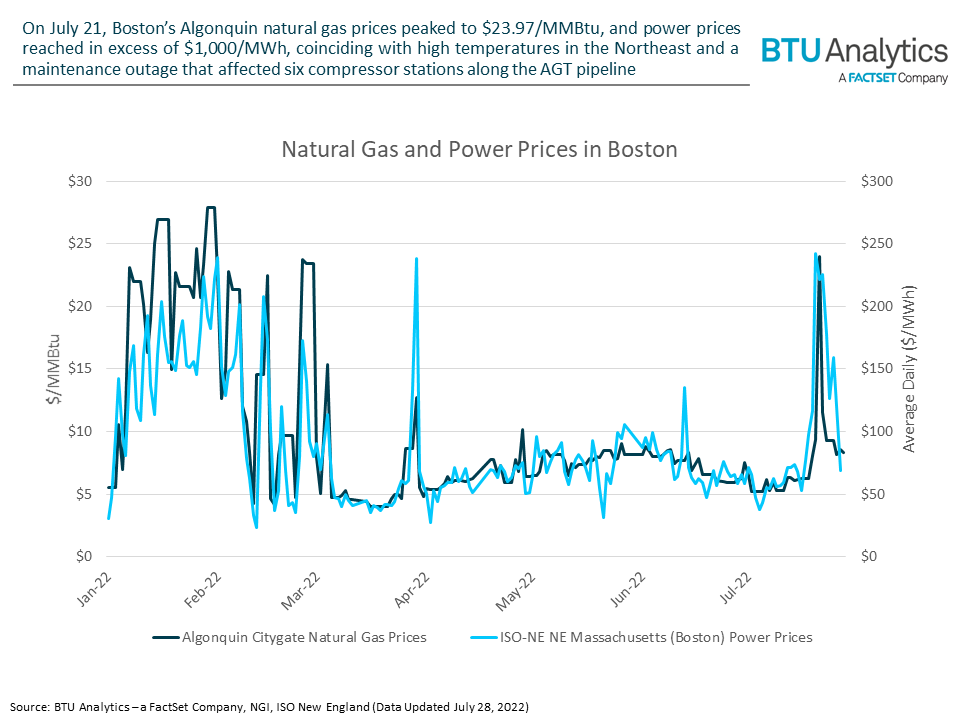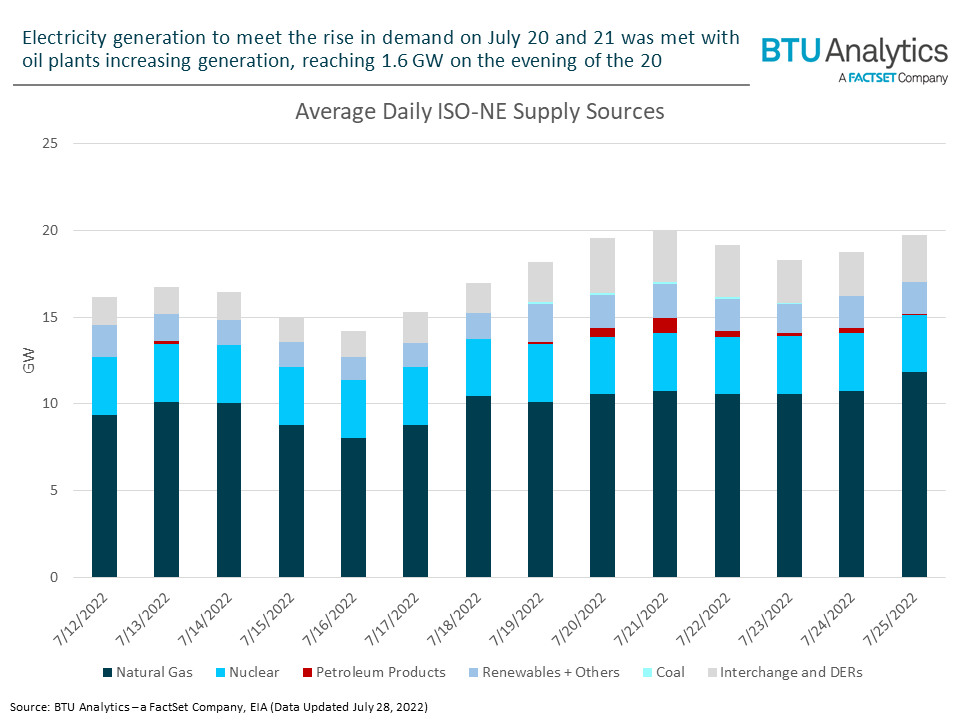Last week, major cities in the Northeast experienced sweltering temperatures near 95 degrees Fahrenheit on July 21, 2022, with Boston even registering an average temperature of 100 degrees Fahrenheit on Sunday, July 24th. Record temperatures in the region led to significant spikes in electricity demand and thus demand for natural gas fired generation. The rapid rise in natural gas demand combined with a maintenance outage on Algonquin Pipeline (AGT), a major natural gas pipeline serving the New England region, led to natural gas prices reaching almost $24/MMBtu in the Boston area on Thursday, July 21st. Today’s Energy Market Insight will explore the dynamics that contributed to this record summer spike in Algonquin gas prices and how the power market absorbed the loss in natural gas supply during a peak demand event.
On July 21st, Boston’s Algonquin natural gas hub prices peaked to $23.97/MMBtu and power prices reached a daily average of $221.84/MWh, which are much higher than prices were in July 2021, when Algonquin prices averaged $3.22/MMBtu and power prices in Boston averaged $36.10/MWh. The chart below shows natural gas and power prices since the beginning of the year and highlights the uncharacteristic summer blow out in pricing that occurred last week.

Natural gas prices surged last week due to a maintenance outage that affected six key compressor stations on the Algonquin pipeline. These compressor stations include Stony Point, Southeast, Oxford, Cromwell, Chaplin, and Burrillville. The maintenance reduced operational capacity for these compressors by 0.54 Bcf/d. This reduction in capacity resulted in a reduction in delivered volumes of 0.45 Bcf/d on July 21st , at a time when power generators needed natural gas to meet peak electricity demand.
Power demand on Algonquin peaked on July 20th at 1.06 Bcf/d, and during the outage power, demand deliveries fell by 0.242 Bcf/d on July 21st. While the outage reduced throughput at Stony Point by 0.45 Bcf/d, AGT was able to redirect some volumes from interconnects with TGP, Maritimes, and Iroquois towards power plants but not meet the full demand level experienced on July 20th.

Since AGT capacity was reduced during the heat wave, the electricity market needed to meet demand through other fuel types besides natural gas. Total electricity demand reached a high of 23.2 GW on July 21st at 6 PM with natural gas accounting for 11.8 GW of the load. With natural gas supplies cut, oil plants fired up contributing over 1.2 GW of electricity at the same time, up from nearly zero on July 18th. After the outage concluded on July 25th, load had subsided reaching a peak of 22.1 GW at 6 PM. Natural gas accounted for 13.6 GW while oil plants were no longer needed and dropped to close to zero. With AGT back online, power generators were not required to switch to fuels to meet peak day demand. The graphic below highlights the contributions from each fuel source during the heat wave.

The New England market continues to heavily rely on natural gas for power deliveries, and the combination of high temperatures and pipeline maintenance resulted in the need to run fuel and diesel generators to meet peak day demand. The pipeline maintenance also resulted in a unique surge in natural gas prices for the region that are normally reserved for winter. Until new offshore wind generation comes to the grid, continue to expect the New England natural gas and power markets to be volatile in both the summer and winter, as heat waves of this magnitude could become a more common occurrence. For more information on natural gas pricing and their impacts on the US natural gas market, check out BTU Analytics’ Henry Hub Outlook.









